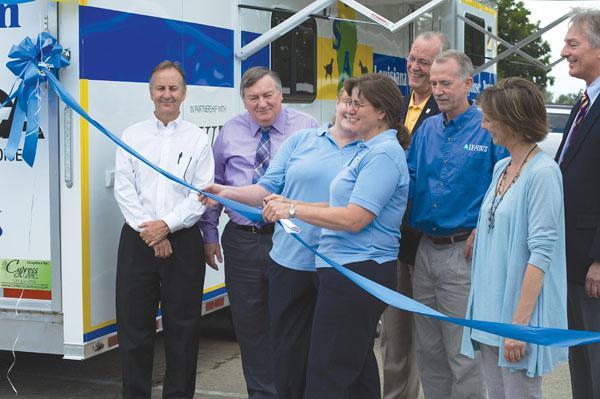After losing an estimated 8,500 animals — not including those drowned and never recovered — during Hurricane Katrina, Louisiana needed a plan for its pets. Louisiana developed its first animal response unit to minimize the number of animals lost in another disaster, thanks to a grant from the American Society for Prevention of Cruelty to Animals and the International Fund for Animal Welfare.The $140,000 truck and trailer unit ,will be used for animal disaster assistance, said Rebecca Adcock, deputy director of Louisiana State Animal Response Team, and will allow LSART volunteers to create an on-site communication center, emergency veterinary care and an evacuation shelter.Lack of communication can be one of the biggest issues in a disaster response, Adcock said. “It will help us have everything in one place,” said Rebecca McConnico, associate professor of equine medicine at LSU School of Veterinary Medicine and LSART equine branch leader. “The new unit will enhance our abilities to respond more quickly, which could end up saving lives – animal and human.” The 36-foot-long trailer is large enough to set up an evacuation shelter inside. Renee Poirrier, director of LSART, said the unit will be able to hold about 50 dogs and cats. A ribbon-cutting ceremony and tours of the unit were held Friday at the School of Veterinary Medicine. Marlow Ball, fourth-year veterinary student, attended the demonstration and said the new unit will be a positive addition for disaster assistance. “We learned from previous experience,” Ball said. “If we aren’t prepared, problems will arise.”The unit will be used throughout the state, and also in other states if they need assistance, Adcock said. The number of animals lost in Katrina made people in the state and national governments aware of the tragedies that can happen to animals during disasters, Adcock said.”The tragedy turned into an opportunity for our state volunteer groups to create safer plans for people and their pets,” Adcock said.On June 27, 2006, former governor Kathleen Blanco signed the Pets Evacuation and Transportation Standards Act, which required parishes to devise plans for evacuating sheltered pets. Louisiana residents can now register their pets at a local parish pickup point for evacuation during natural disasters. The animals are brought to a shelter whose location is coordinated with their owner’s shelter. McConnico said the process is much more efficient if people are allowed to take care of their own pets at a shelter. This was the procedure during Gustav, and fewer lives were lost because of it.”There are so many people that are so bonded with their pets,” Adcock said. “What we recognized in emergencies is that if you don’t make some type of arrangements for the pets, the people aren’t going to evacuate.”LSART partners with the vet school in providing some of their disaster response training, Adcock said. The University was one of the first veterinary schools in the country to offer third- and fourth-year student courses for animal response, Poirrier said. “We have about 10 or 15 volunteers in every class,” McConnico said. “At any one time, there are 40 to 50 students that would be able to help.”A lot of University veterinarians are members of LSART and are trained to be able to respond to animal emergencies, Adcock said. “The school is very supportive of [LSART],” McConnico said. “We’re available to help if they need it.”
– – – -Contact Sarah Eddington at [email protected]
La. develops its first animal response unit
September 19, 2009

The Louisiana State Animal Response Team (LSART) and other contributors gather at the ribbon-cutting ceremony for the opening of a new animal emergency response unit at the LSU Vet School’s Equine Lameness Pavillion.




